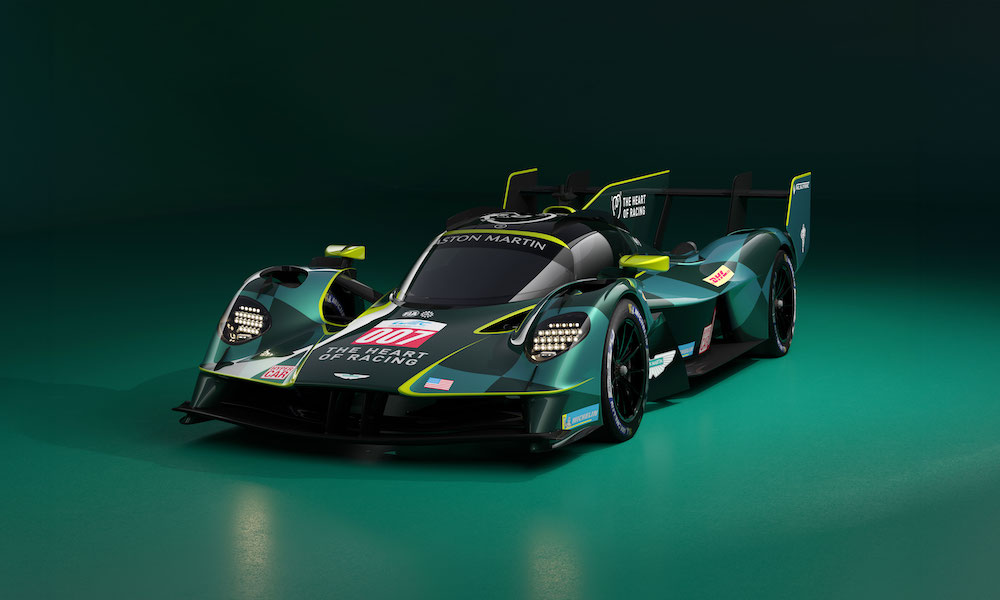
For the 2025 FIA WEC season, which gets underway later this month in Qatar, the big headline addition to the field is the pair of Aston Martin Valkyrie AMR-LMHs in Hypercar. It’s one of the most hotly-anticipated program debuts of recent times for several reasons, but principally because it’s been five years in the making.
The original Valkyrie program was set to debut back in 2020 after Aston Martin became the second manufacturer (after Toyota) to commit to the ruleset back in 2019. But its plans were scrapped before testing got underway as the brand’s priorities shifted to Formula 1. Now, though, after Gabe Newell’s Heart of Racing organization resurrected the effort in 2023, we will finally see the Valkyrie in competition.
The car’s test program, which got underway in the UK last July at Silverstone and Donington Park, has been hailed a “success” by the manufacturer.
More than 15,000 kilometers have been covered at circuits in Europe, the Middle East and the USA by the two test chassis produced. The car has been put through its paces at Vallelunga, Jerez, Bahrain, Qatar, Road Atlanta, Sebring and Daytona in preparation for the car’s global debut, which will come in the Middle East after Heart of Racing decided to sit out the Rolex 24 at Daytona to free up time before the car’s final homologation.
The Valkyrie stands out from the pack in the Hypercar and GTP ranks and not just because of its dashing good looks and the eye-catching liveries. You could say it’s the purest horse in the race. It’s a non-hybrid LMH-spec prototype based on a road car which has been in the hands of customers since 2021. Philosophically, it ticks just about every box that the Hypercar regulations originally set out to achieve.
But that doesn’t mean that putting this racer together has been a simple task – far from it. Ensuring the Valkyrie fits within the regulatory boundaries that the FIA and ACO have put in place has been a complex exercise in engineering.
The car’s Cosworth-built 6.5-litre naturally aspirated V12 engine – which in roadgoing form reaches 11,000 rpm and produces over 1000 bhp – has been modified to get it in the performance window and withstand the punishment it will take during some of the longer, more taxing races.
On reliability and durability, the hypercar regulations, which include a power limit of 500kW (680bhp), offer advantages for a V12 that was already built to withstand extremes.
“Running lean to reduce the amount of fuel you are carrying to deliver the required stint energy is important,” Aston Martin’s endurance racing boss Adam Carter says. “We operate the engine slower than it’s capable of because we require less power. The lower power limit within the regulations creates an opportunity for us to revisit the torque curve and reduce frictional losses by reducing engine speed to increase fuel efficiency.
“In order to take a 6.5-litre V12 in that package and meet the regulatory requirements within WEC and Hypercar it’s not possible to create that (a hybrid component),” Carter adds. “Also, Aston Martin V12 engines feature throughout the product range, so running a sustainable fuel, lean-burn engine is synergy with that strategy.
“Everything is based on closed-loop torque controls at the rear wheels, and it’s about how good a job you do at achieving that control. We’re confident that we have a very capable package.”
As an aside, there’s been plenty of discussion regarding the decibel levels the car will produce in competition via its V12. When testing at Daytona at the end of last year, it ran quieter than expected. This, according to Carter, was the result of a cautious approach to silencing the car.
“When it first started running we were over-suppressed in terms of noise, we took a safe position in terms of silencing. The worst-case scenario is to get stopped in testing due to breaching noise limits,” he explains.